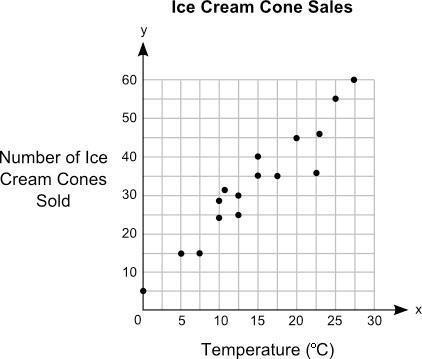
Mathematics, 21.04.2021 01:00 tacosloco4629
Trying this again cause the last one didn't get a proper answer and I'm gonna run out of points. I just don't wanna fail. Thank you.
1. To determine if "A" students tend to sit in a particular part of the classroom, a teacher recorded the locations of the students who received grades of A. He found that 17 sat in front, 9 sat in the middle, and 5 sat in the back of the classroom, when testing the assumption that the "A" students are distributed evenly throughout the room, he obtained the test statistic of x2 = 7.226. If using a 0.05 significance level, is there sufficient evidence to support the claim that the"A" students are not evenly distributed throughout the classroom? Then state the conclusion.
A. Fail to reject the null hypothesis; there is sufficient evidence to support the claim that the A" students are not evenly distributed throughout the classroom.
B. Fail to reject the null hypothesis; there is sufficient evidence to support the claim that the "A" students are evenly distributed throughout the classroom.
C. Reject the null hypothesis; there is sufficient evidence to support the claim that the "A" students are not evenly distributed throughout the classroom.
D. Reject the null hypothesis; there is sufficient evidence to support the claim that the "A students are evenly distributed throughout the classroom.
4. After getting several "flat tire" excuses for missed tests, a college instructor asked her 40 students to identify the tire they would select for their excuse and recorded the results in a frequency table with the following categories: left front, right front, left rear, and right rear. If you are using a 0.05 significance level to test a claim that the results fit a uniform distribution, what is the critical value for the goodness-of-fit test needed to test the claim?
A. 7.815
B. 55.758
C. 9.488
D. 43.773
7. An experiment is performed using 1000 trials to test a new scientific model. There are 10 different categories of outcomes. When testing the claim that the observed outcomes agree with the expected frequencies, a test statistic is found to be χ2 = 8.185. Use a 0.05 significance level to test the claim that the actual outcomes agree with the expected frequencies. State the conclusion.
A. Fail to reject the null hypothesis; there is sufficient evidence to warrant rejection of the claim that the observed outcomes agree with the expected frequencies.
B. Reject the null hypothesis; there is not sufficient evidence to warrant rejection of the claim that the observed outcomes agree with the expected frequencies.
C. Reject the null hypothesis; there is sufficient evidence to warrant rejection of the claim that the observed outcomes agree with the expected frequencies.
D. Fail to reject the null hypothesis; there is not sufficient evidence to warrant rejection of the claim that the observed outcomes agree with the expected frequencies.
8. A wedding caterer randomly selected clients from the past few years and recorded the months in which the wedding receptions were held. She was interested in testing a claim that weddings occur in different months with the same frequency. She found the test statistic to be χ2 = 10.600. Use a 0.05 significance level to find the critical value for the goodness-of-fit and test the claim that weddings occur in different months with the same frequency. Then state the conclusion.
A. 19.675; reject the null hypothesis
B. 21.026; reject the null hypothesis
C. 19.675; fail to reject the null hypothesis
D. 21.026; fail to reject the null hypothesis
10. A candy company claims that the colors of the candy in their packages are distributed with the (1 following percentages: 16% green, 20% orange, 14% yellow, 24% blue, 13% red, and 13% purple. If given a random sample of packages, using a 0.05 significance level, what is the critical value for the goodness-of-fit needed to test the claim?
A. 12.592
B. 15.822
C. 12.833
D. 11.071

Answers: 3


Another question on Mathematics

Mathematics, 21.06.2019 12:30
Aschool typically sells 500 yearbooks each year for 50 dollars each. the economic calls does a project and discovers that they can sell 100 more yearbooks for every $5 decrease in price. the revenue for yearbook sales is equal to the number of yearbooks sold times the price of the yearbook. let x represent the number of $5 decrease in price. if the expression that represents the revenue is written in the form r(x)=(500+ax)(50-bx). to maximize profit, what price should the school charge for the yearbooks? what is the possible maximum revenue? if the school attains the maximum revenue, how many yearbooks will they sell?
Answers: 3

Mathematics, 21.06.2019 14:30
If lmn=xyz, which congruences are true by cpctc? check all that apply
Answers: 1


Mathematics, 21.06.2019 21:50
Tamar is measuring the sides and angles of tuv to determine whether it is congruent to the triangle below. which pair of measurements would eliminate the possibility that the triangles are congruent
Answers: 1
You know the right answer?
Trying this again cause the last one didn't get a proper answer and I'm gonna run out of points. I j...
Questions

English, 18.10.2020 01:01


Geography, 18.10.2020 01:01

Geography, 18.10.2020 01:01


Chemistry, 18.10.2020 01:01

Physics, 18.10.2020 01:01

Mathematics, 18.10.2020 01:01



English, 18.10.2020 01:01

Spanish, 18.10.2020 01:01

Mathematics, 18.10.2020 01:01

History, 18.10.2020 01:01

Arts, 18.10.2020 01:01

History, 18.10.2020 01:01


English, 18.10.2020 01:01





